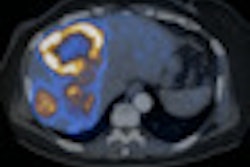GE Hitachi Nuclear Energy (GEH) of Wilmington, NC, has been selected by the U.S. Department of Energy's (DoE) National Nuclear Security Administration to develop a new medical isotope-producing technology that eventually may help meet U.S. demand for molybdendum-99 (Mo-99).
GEH's technology relies on activating molybdenum in its metal form, rather than fissioning high-enriched and low-enriched uranium.
"We take natural molybdenum metal, which is mined and refined into a pure metal, put that into a reactor, and activate it using a neutron flux within the reactor," explained Chris Monetta, senior vice president of advanced programs for nuclear fuel cycle at GEH. The material is processed into a gel and then into a powder that can be used in a Mo-99 generator before final distribution to a radiopharmacy, he said.
So far, the powdered molybdenum has been loaded into generators for testing purposes. GEH plans to continue research and development to confirm the technology's efficacy in existing commercial nuclear reactors and determine the necessary infrastructure and logistics to support such an operation.
Commercial options
GEH currently is pursuing agreements with commercial nuclear reactor operators. The Department of Energy would need to review the GEH technology and approve any plans to add it to existing nuclear facilities, with the goal of starting shipments around 2013.
The DoE is encouraging similar medical isotope-producing ventures, which would manufacture enough supply to meet as much as 50% of the North American demand. "We think we can do that with this technology," Monetta said.
The need for Mo-99 and technetium-99 has been a major issue for nuclear medicine practitioners, especially over the past eight months with the unscheduled shutdown of the Chalk River, Ontario, nuclear reactor by Atomic Energy of Canada in May 2009 for repairs. The facility, which supplies approximately half of the medical isotopes to the U.S., will be offline at least until late March.
'Quite attractive'
GEH recently showed its powdered molybdenum process to Robert Atcher, Ph.D., chair of SNM's Domestic Isotope Availability Task Force and a professor of pharmacy at the University of New Mexico/Los Alamos National Laboratory. In a written statement, Atcher said the technology "provides a path forward that is quite attractive" to meet the needs of both short- and long-term medical isotope supply and demand.
GEH was created by parent company General Electric of Stamford, CT, and Tokyo-based Hitachi in 2007 as a joint venture to serve the commercial nuclear energy industry around the world with materials, equipment service, engineering, and technology.
Last week GEH and Chicago-based Exelon signed an agreement to use GEH's isotope generation technology for cobalt-60, a radioisotope used in cancer treatment and other biomedical applications.
U.S. Nuclear Regulatory Commission approved a license amendment permitting the use of GEH's technology at Exelon Nuclear's Clinton Power Station in Dewitt County, IL. Installation of the technology for the pilot project is scheduled during Clinton's current planned maintenance and refueling outage.
By Wayne Forrest
AuntMinnie.com staff writer
January 26, 2010
Related Reading
Covidien to halt generator production, January 22, 2010
Chalk River restart may be delayed, January 15, 2010
Lantheus to get Mo-99 shipments, December 18, 2009
U.S. House approves bill to fund U.S. Mo-99 production, November 6, 2009
AECL: Chalk River repair will cost $70M, October 20, 2009
Copyright © 2010 AuntMinnie.com



















